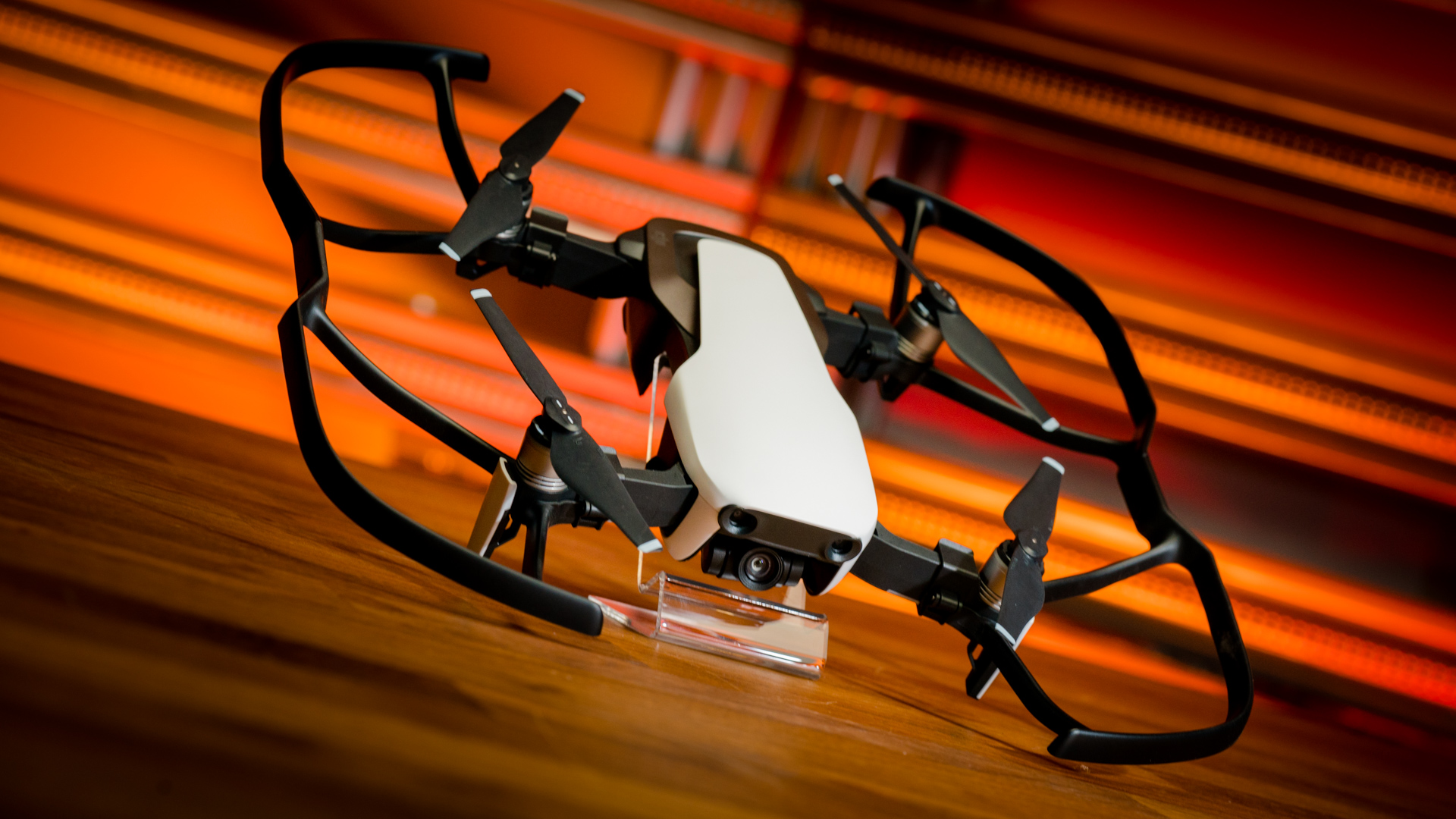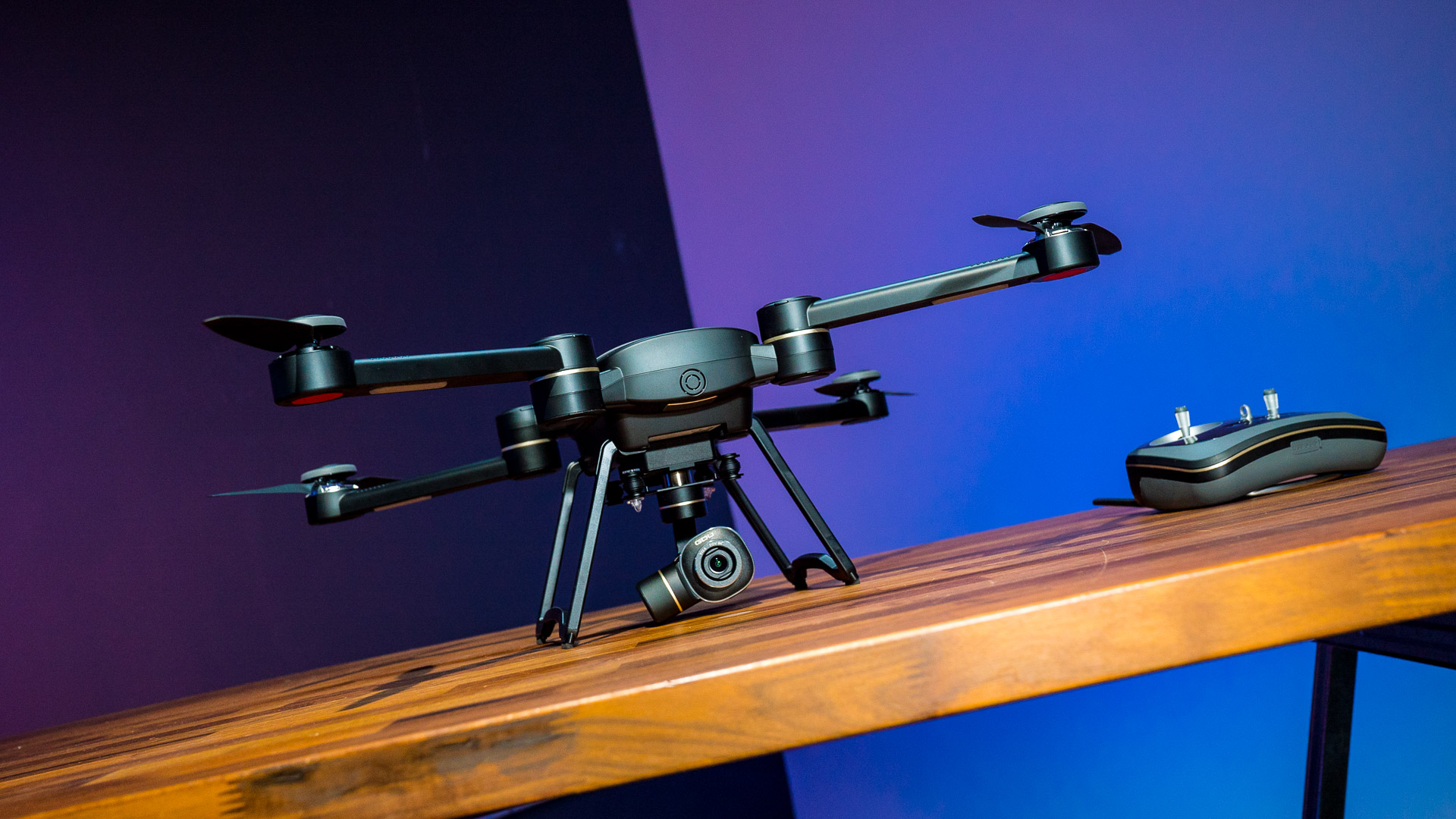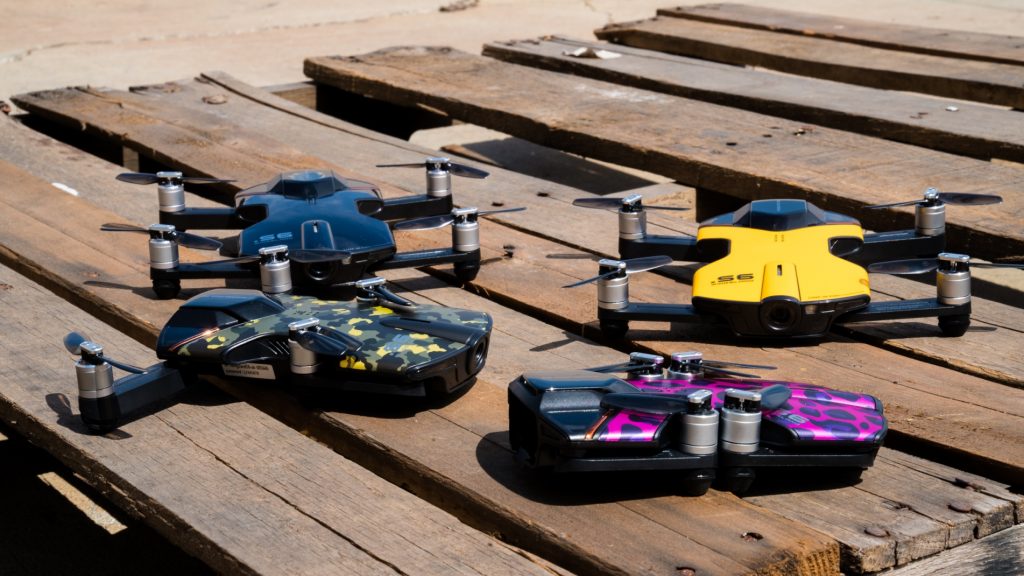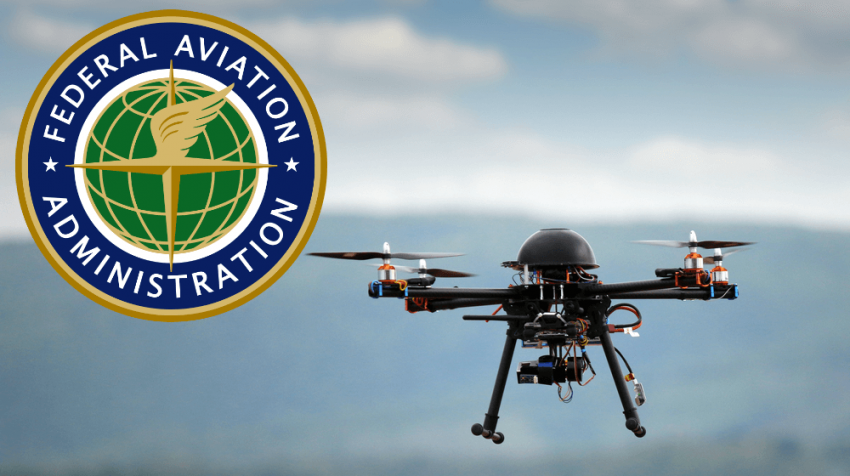
Flying drones is an exciting frontier for hobbyists, aviators, and photographers. From casual drones that come in at under $150 to professional video and racing drones that can cost well over $2000, the sky is truly the limit for this exciting pursuit. However, buying a new drone can get tricky with various design and performance features to look out for and the many brands in the space. This guide will help outline the primary differences between drone types and everything one should know before they hit the sky.
The Basics of Drone Buying

Drones are remote-control (RC) multi-rotor flying devices that provide new ways of looking at the world by taking photos and videos from different perspectives. Many of today’s RC drones offer real-time first-person viewing (FPV), putting users in the driver’s seat for an exciting joyride where they can explore the air from a pilot’s perspective.
Before it’s time to fly, it’s essential to consider three main things: budget, experience, and intention. Each of these will vary between shoppers since the perfect drone is different for everyone. Here are some quick tips on what to think about before buying:
- Opting for a cheaper toy drone is a great way to learn the basics before investing in a higher-quality device.
- Most drones today will fall into two price categories – under $150 or over $500. Cheaper drones have basic features and controls, while pricier ones can include high-definition camera equipment and autonomous flight modes.
- Most drones are relatively easy to repair after a crash, but the cost of parts can add up.
- Flight times for all types of drones are limited by battery life.
- Learn to stay within the drone’s signal range.
- If possible, use a simulator to get to know the drone better before the first flight.
Drone Brands
 There are many drone manufacturers; however, for this assessment, we will focus on three of the more popular brands. Each of the companies below has a strong track record of producing reliable units that are used around the globe. Also, most brands carry various drone models suitable for varying skill levels. If you have brand loyalty to a specific manufacturer, chances are that the brand has a drone for each stage of your development.
There are many drone manufacturers; however, for this assessment, we will focus on three of the more popular brands. Each of the companies below has a strong track record of producing reliable units that are used around the globe. Also, most brands carry various drone models suitable for varying skill levels. If you have brand loyalty to a specific manufacturer, chances are that the brand has a drone for each stage of your development.
DJI
DJI has a strong reputation for quality-built, advanced drones. DJI began selling drones and controllers in 2006 and entered the consumer drone market in 2013. Their drone models, such as the Mavic and Mini series, offer innovative features such as tri-directional obstacle sensing and the Advanced Pilot Assistance System (APAS) for real-time detection and avoidance of obstacles in a drone’s flight path. However, with the highest price point of the three brands we are examining, DJI drones are best suited for intermediate and advanced users familiar with drone operations.
Holy Stone
Holy Stone offers drones at substantially lower price points than DJI. Like DJI, Holy Stone has different model types catering to varying levels of drone expertise. Popular models include the HS720E and the HS200. However, the modest pricing reduces advanced features and materials incorporated into the drone designs. This reduction means, on average, Holy Stone drones are heavier with a drop in critical metrics like flight time, altitude and distance. However, Holy Stone does offer users some valuable features like gesture recognition for taking selfies, custom flight path mapping and emergency engine shut-off during collisions. Holy Stone is an excellent entry brand for new drone pilots, especially the HS200, which is compact, easy to fly indoors and outdoors and highly budget-friendly.
Contixo
Contixo is an American company based out of California specializing in educational toys, computers and robotics. Considered a good beginner drone, the Contixo F22 is humbly priced but features a relatively powerful HD camera. The drone also has similar features to Holy Stone and DJI models, including custom flight pathing, gesture control, and point of interest orbiting, allowing users to capture 360-degree views of a subject. However, the F22 lacks a camera gimbal (discussed below), limiting its use as a camera drone. A big selling point for Contixo’s F22 is its low weight. Drones under 250 grams do not need to register with the US Federal Aviation Administration.
Deep dive: How to Choose the Best DJI Drone for Your Use and Budget
Types of Drones
Beginner Drones
At the lower end of the drone spectrum are toy drones, like the DJI Tello and the Holy Stone HS210. These simple and inexpensive drones range from $50 to $100 and focus more on fun than advanced features. However, their controls are straightforward to learn and can be accessed through a smartphone app or remote control.
The flight times of beginner drones and drones for kids are also more limited – generally less than 10 minutes, or even fewer than five for the very cheap models. Despite the limited flight time, beginner drones excel at performing tricks like mid-air . Because these economy drones receive rough treatment from users, spare parts are available at reasonably low prices if anything goes wrong.
And things will go wrong. Crashes happen. Some small drones also come with video cameras, though the image quality captured tends to be poor. But don’t count them out too soon – getting a cheap drone is a fantastic way to learn to fly before upgrading to a more expensive model. They also won’t cost a fortune to fix or replace in the event of a crash.
Camera Drones
Drones with cameras – like the DJI Mini 2, the Holy Stone HS720E and the Contixo F22 are specifically designed to capture images and video and range in price from $500 to $1,500. In addition, camera drones are designed to provide a steady platform for the camera lens. As a result, these sophisticated flying machines are more focused on recording high-quality video and still images than performing mid-air tricks. Finally, video drones typically need to be registered with the FAA because they are larger and heavier than other drones due to the added equipment necessary to function.
Video drones often come with gimbals, a system designed to pan and tilt the camera – and cushion it from the motors’ vibrations – to cancel out the drone’s motion and keep the lens steady. Gimbals can either come as an electronic system built into the camera or as a physical system made of motors and gears. Either way, gimbals allow users to direct the camera at whatever angle they like, to capture beautiful pans like those seen in nature documentaries.
Larger drones require bigger batteries, which often translates to longer flight times. A fully charged battery typically lasts a camera drone for around 20 minutes, and batteries can often be quickly swapped out to extend a flying session.
Like toy drones, video drones are designed and built with repairs in mind, and replacement parts are generally readily available and inexpensive. For example, DJI’s Mini 2 has numerous replacement components, ranging from $15 to $30.
Camera drones’ video quality can vary widely, from the Holy Stone HS200’s adequate 720p resolution to the DJI Mini 3’s crisp, 4K HD quality video. So while the videos produced by cheaper models like the HS200 will be good enough for most use cases, it’s worth investing in a more sophisticated camera drone when video quality is your primary focus.
From photographing special occasions to surveying construction sites, drones facilitate an ever-expanding range of purposes. Dedicated drone film festivals have popped up in major cities like New York and Berlin to showcase the creative new ways amateur moviemakers utilize their flying cameras.
Not only that, but the more innovative drones – like the DJI Mini 3 – have functional object tracking modes for its camera to aid in a recording. They can even use cameras or sensors to detect and avoid obstacles obstructing their flight path in real-time. In addition, these more advanced drones allow users to play with their device’s autonomy by letting them navigate a predefined course on their own via GPS. However, the autonomous flight has some restrictions – these drones must be registered with the FAA and remain in the pilot’s line of sight. The pilot must also be able to take back control of the drone at any point.
Racing Drones
With the rise of drones came the surge of drone-based competition – and drone racing might be the most exciting. Racing drones are on the smaller side and explicitly designed to offer pilots speed and agility. Users see through their drone’s lens via first-person-view headsets, navigating around a course and trying to beat other fliers. This aspect of competition means racing drones are also camera drones, though they typically have components removed to increase the drone’s speed. In addition, many racers adapt their drone by hand to shed unnecessary weight or increase motor power – similar to their automobile racing counterparts.
Drone Safety

Drones can be an incredibly fun and fruitful new hobby, but they must be flown responsibly. Even a small toy drone can hurt someone if hit by it, and fingers can get injured if caught in the rotor blades. To fight this, some drones have built-in shields to protect the rotors, but even these aren’t foolproof. It’s best to fly any kind of drone, big or small, with proper care and caution. Here’s five quick tips for drone safety:
- Know the drone. Before the first flight, take the time to read through the instruction manual and get familiar with the controls.
- Check the drone before flight, looking for any damage to the motors or rotors that could fail in the air.
- Never fly near people or animals.
- Fly with caution, particularly when first using a drone or taking a new one for a spin. Always be sure to land before the drone’s battery runs outs.
- Fly with care. Drones can be noisy, annoying and even scary to those near their flight path. If someone asks to stop flying, be reasonable and courteous.
To learn more about drone safety, the Academy of Model Aeronautics (AMA) is a fantastic resource on all things drone. The AMA can help connect drone enthusiasts with others in the area to share both beginner’s flying techniques, and more advanced tips and tricks. Remote-control flying clubs often meet regularly to discuss and fly drones together. But remember that with great power comes great responsibility. Make sure to update all software and firmware before any takeoff, and read the drone’s manual thoroughly before use. For FAA registration requirements and further information on drone safety, check the FAA website. Additional local jurisdiction requirements may apply, so it’s important to stay informed on the latest drone regulations for the area.
Drones & The Law
Recently, the Federal Aviation Administration (FAA) introduced registration requirements for anyone flying a drone weighing over 250g recreationally. Most drones that fall under the toy category will not have to be registered, while those built for video, racing and autonomous flight likely do. Drone registration can be done via the FAA website – and separate, more stringent requirements are applied to professional drone fliers.
Once registered, the registration number must be displayed on the drone. This can be as simple as a sticker or shipping label placed under the battery, along with the owner’s name and number in case of theft or loss. The FAA also defines restrictions on where drones can be flown. They can’t be flown higher than 400 feet, in restricted airspaces, or over emergency areas, like traffic accidents or wildfires. They’re also banned from flying through national parks and cannot be flown within 5 miles of an airport without informing the air traffic controllers. Federal, state, and local regulations can vary, so check with the organizations directly if unsure.
Drone Accessories & Add-ons
Additional hardware can be added to drones that have ample lift from their propellers and motors. Lift specs can be found via the drone manufacturer’s website. In general, drones built to support external cameras are usually equipped to carry an additional half pound or more of weight above that of the drone on its own. Added weight increases stress on the motors and can affect flight time and stability.
The most popular and useful drone accessory is undoubtedly the spare battery. Drone batteries can provide between 5 and 25 minutes of power in the air per charge but can take an hour or longer to recharge. Fortunately, most drone batteries can simply be replaced with a freshly charged one when the power levels get low. To get the most airtime out of each flying session, users should invest in several spares.
Stocking drone spare propellers and parts is recommended because occasional mishaps and less-than-perfect landings are an inevitable part of flying drones. Drones are designed to survive crashes; the exterior components are made from sturdy materials such as polypropylene foam and carbon fiber to protect sensitive parts like the CPUs, motors and transmitters. The parts that break the most easily, like the propellers, are the cheapest and easiest to repair or replace. New drones often have extra propellers included, and additional spares are usually available for purchase separately as well. Remember that drones need different propellers to spin clockwise and counterclockwise for stability, so it’s wise to get both kinds of spare propellers.
Depending on use cases, other drone add-ons that may be of interest include LED bands, propeller guards and extra landing gear. For photography drones in particular, various lens filters can be added to alter saturation levels, reduce glare, and more. Getting a quality bag or case specifically designed to carry a drone is an important investment as well. Drone bundles can often be found with a number of accessories. Drone cases should have a foam interior built to fit the device and its accessories and protect them from damage during transit.

